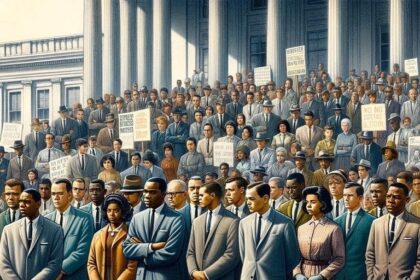Introduction
Every empire begins with a single, uncertain step. For Nike, that step was taken by a young man with no money, no connections, and only a dream and a pair of running shoes in his bag. Today, Nike is worth over $150 billion, a symbol of sports excellence, cultural influence, and marketing genius. But its birth story is far from the polished corporate image we know.
This is not just about how Nike became a sportswear titan it’s about how Phil Knight, its founder, turned nothing into something the world could never ignore. It’s a journey of risky bets, relentless innovation, and a vision that ran faster than anyone else’s.
Humble Beginnings: The Spark of an Idea
In 1962, Phil Knight was a 24-year-old graduate from the University of Oregon and Stanford Business School. He had no capital, no factory, and no established brand. What he had was an idea he called his Crazy Idea: importing high-quality running shoes from Japan to the U.S., breaking the German monopoly dominated by Adidas and Puma.
Armed with a small loan from his father, Knight traveled to Japan and struck a deal with Onitsuka Tiger (now ASICS) to distribute their shoes in America. He began selling them from the trunk of his car at track meets.
Turning Influence into a Brand
The turning point came when a major beauty brand noticed her engagement rates and offered a paid collaboration. Instead of simply endorsing others’ products, she saw the bigger picture: Why not create her own?
She started with a single product a lipstick shade she had worn in dozens of posts. Limited quantities sold out within hours. This wasn’t just a product launch; it was a community event. Every purchase was personal, every package included a handwritten note.

The Side Hustle That Wouldn’t Stay Small
Knight partnered with his former track coach, Bill Bowerman, who was obsessed with creating lighter, better-performing shoes. Their partnership became Blue Ribbon Sports in 1964 a tiny operation run from Knight’s parents’ basement.
Bowerman’s tinkering with shoe designs famously using a waffle iron to mold rubber soles was not just experimentation, it was the foundation of Nike’s innovation culture.
By the early 1970s, tension with Onitsuka Tiger pushed Knight to take a daring leap: creating his own brand.

The Birth of Nike and the Swoosh
In 1971, Nike was born. The name came from the Greek goddess of victory, suggested by an employee. The logo now one of the most recognizable in the world was designed by a student, Carolyn Davidson, for just $35.
The first Nike shoe featured Bowerman’s waffle sole design, offering superior grip and lighter weight. But the breakthrough wasn’t just the product it was the marketing.

The Breakthrough Moment: Selling Aspiration
Nike didn’t just sell shoes; it sold a dream. In the 1980s, the brand introduced the legendary “Just Do It” campaign, alongside endorsements from rising stars like Michael Jordan. The Air Jordan line revolutionized sports marketing, turning athletes into lifestyle icons.
Knight understood something powerful: people weren’t just buying performance they were buying identity.
By 1990, Nike controlled over half of the U.S. athletic shoe market.

Challenges, Controversies, and Comebacks
Nike’s rise wasn’t without storms. Criticism over overseas labor conditions in the 1990s threatened its image. Instead of ignoring it, Knight publicly addressed the issue, improving labor standards and supply chain transparency.
The lesson? Global brands must evolve with social expectations, not just market trends.

Legacy and Lessons for Entrepreneurs
Phil Knight’s journey from selling shoes from his car to building a global powerhouse offers timeless lessons:
- Start small, dream big: A modest start doesn’t limit a grand vision.
- Leverage partnerships: Find allies who complement your weaknesses.
- Innovate relentlessly: Constant product improvement is non-negotiable.
- Tell a story: Customers buy into meaning, not just merchandise.
- Face challenges head-on: Transparency builds resilience.
As Knight wrote in his memoir Shoe Dog, “Play by the rules, but be ferocious.”
Conclusion
Nike’s story is proof that empires can rise from a trunk full of shoes and a dream too bold to be ignored. Phil Knight’s journey was not linear it was messy, risky, and full of near-failures. But that’s exactly what makes it a blueprint for any entrepreneur who dares to start with nothing.
Nike’s true victory wasn’t just in market share it was in shaping global culture. And it all started with one man’s crazy idea.
FAQ
Q1: What was Nike originally called?
It began as Blue Ribbon Sports in 1964 before becoming Nike in 1971.
Q2: Who designed the Nike Swoosh?
Carolyn Davidson, a design student, created it for $35.
Q3: What was Nike’s first major marketing breakthrough?
The Air Jordan partnership in the 1980s, paired with the “Just Do It” campaign.
Q4: How much is Nike worth today?
As of 2025, Nike’s market capitalization exceeds $150 billion.
Q5: What’s the biggest lesson from Phil Knight’s journey?
Greatness comes from bold ideas, relentless execution, and the courage to adapt.






